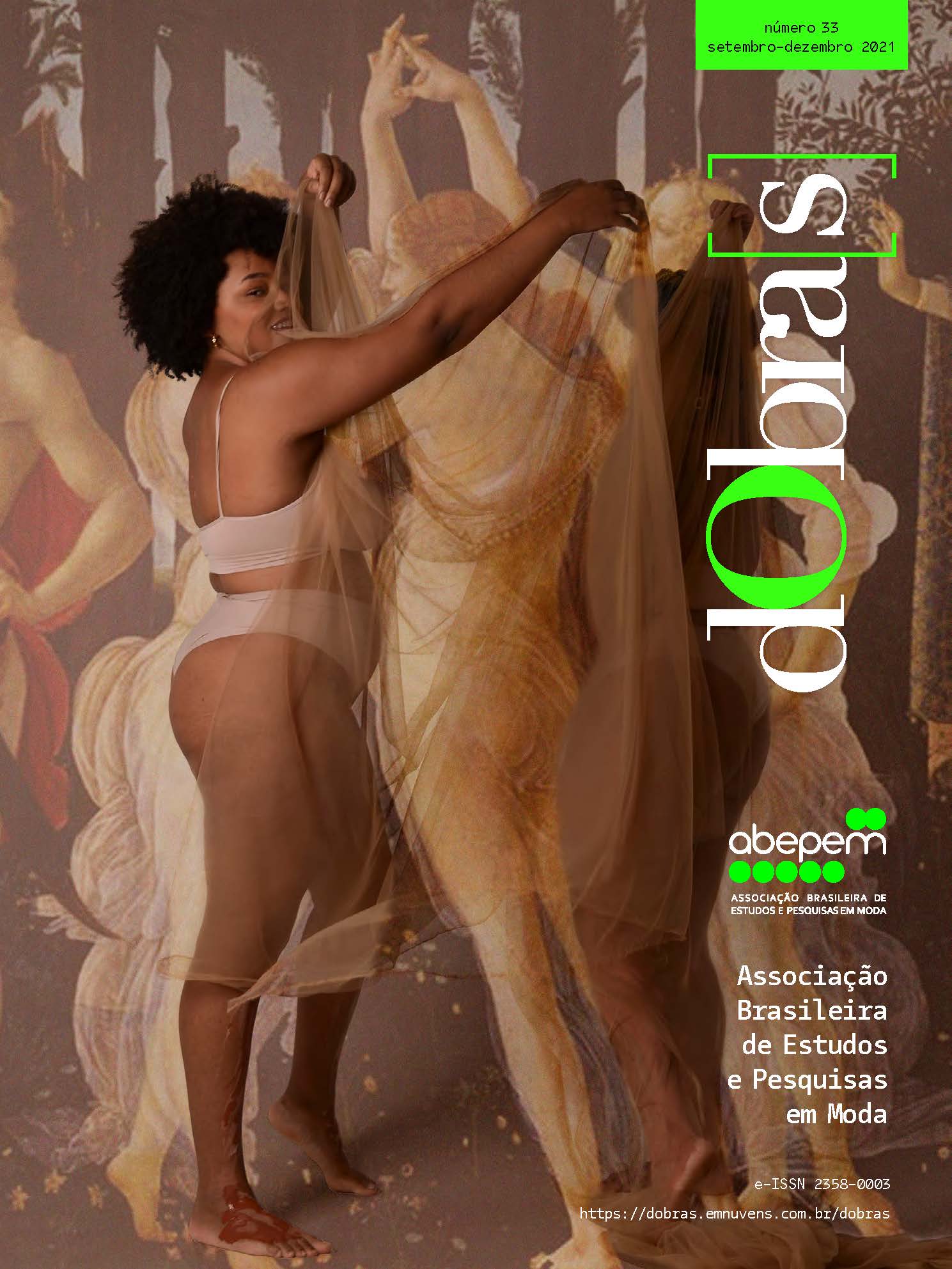“If it doesn’t fit me, it doesn’t fit me”
fatphobia in plus size fashion.
DOI:
https://doi.org/10.26563/dobras.i33.1437Keywords:
Fatphobia, Plus size fashion, Consumption, Dissent, Fat ActivismAbstract
This article is part of both in progress and already concluded research by the authors. It aims at understanding the social and emotional aspects that result from the relationship between plus size fashion and fatphobia, by focusing mainly on the idea of fashion as an important component of social life that reinforces identities and touches upon issues of representation. In this sense, it is assumed that even when it is defined by an alleged idea of diversity, as in the case of plus size fashion, fashion for fat women still plays a role as a medium that further reinforces stereotypes in and around the standardization of bodies and maintains the ideal of accessibility that is inclusive to all women at a distance. We present the fallacies that support this taken for granted idea of diversity presented in the plus size fashion market, and used as a marketing strategy that co-opts the discourse of fat activism, but does not truly constitute either inclusion or significant structural changes in itself. We also bring about some examples of the role fat dissent plays in guiding the fashion industry, especially through online activism on social networks.
Downloads
References
BATLIWALA, Srilatha. The meaning of women’s empowerment: new concepts from action. In: SEM, G., GERMAIN, A. & CHEN, L.C. (Eds.). Population policies reconsidered: health, empowerment and right. Boston: Harvard University Press, 1994, p. 127-138. (tradução nossa).
BERTH, Joice. O que é empoderamento? Coleção Feminismos Plurais. Belo Horizonte: Letramento, 2018.
BUTLER, Judith. Excitable Speech: a politics of the performative. New York: Routledge, 1997.
_____________. Problemas de Gênero: Feminismo e Subversão da Identidade. Rio de Janeiro, Civilização Brasileira, 2003. ELIAS, Norbert. A sociedade dos indivíduos. Tradução Vera Ribeiro. Rio de Janeiro: Zahar, 1994.
FOUCAULT, Michel. A ordem do discurso. São Paulo: Editora Loyola, 1996.
JIMENEZ-JIMENEZ, Maria Luisa. Lute como uma gorda: gordofobia, resistências e ativismos. 2020. Tese (Doutorado) - Programa de Pós Graduação em Estudos de Cultura Contemporânea – ECCO – Universidade Federal de Mato Grosso (UFMT). Cuiabá, MT, Brasil. Disponível em: http://lutecomoumagorda.home.blog/tese-de-doutorado-lutecomo-umagorda- gordofobias-resistencias-e-ativismos/
LANZ, L. O corpo da roupa: A pessoa transgênera entre a transgressão e a conformidade com as normas de gênero. Curitiba: Transgente, 2015.
LE BRETON, David. Sinais de Identidade – Tatuagens, piercings e outras marcas corporais. Lisboa: Miosótis, 2004.
LIPOVETSKY, Gilles. Da leveza: rumo a uma civilização sem peso. São Paulo: Manoele, 2016. PODE ME CHAMAR DE GORDA. Grupo no Facebook de empoderamento de mulheres gordas. (2017, 2018, 2019). Disponível em: https://www.facebook.com/podemechamardegorda/.
PRECIADO, Paul B. Nossos corpos trans são um ato de dissidência do sistema sexo e gênero. Resista: observatório de resistências plurais. Disponível em:https://resistaorp.blog/2019/03/26/nossos-corpos-trans-sao-um-ato-de-dissidencia-do-sistema-sexo-genero/.
Rap Plus Size. Eu só pago o que me cabe, 2021. Disponível em: https://www.youtube.com/ watch?v=1eCq12EWBrU
SANT’ANNA, Denise Bernuzzi de. Corpos de Passagem: ensaios sobre a subjetividade contemporânea. São Paulo: Estação Liberdade, 2001.
SWAIN, Tania Navarro. Feminismo e recortes do tempo presente: mulheres em revistas "femininas". São Paulo: Perspectivas, v15, n. 3, 2001. p. 67-81.
TOVAR, Virgie. Meu corpo, minhas medidas. São Paulo: Primavera Editorial, 2018. VOZ DAS GORDAS. Grupo no Facebook para mulheres gordas (2016, 2017, 2018, 2019). Disponível em: https://www.facebook.com/VozdasGordas/.
WOLF, Naomi. O mito da beleza: Como as imagens de beleza são usadas contra as mulheres. Rio de Janeiro: Rocco, 1992, 2018.
Downloads
Published
How to Cite
Issue
Section
License

This work is licensed under a Creative Commons Attribution-NonCommercial-ShareAlike 4.0 International License.
The copyrights of the works published in this journal belong to the author, and dObra[s] holds the rights of first publication. Due to their publication in this open access journal, any work here is free to use, with its own attributions, in educational and non-commercial applications.










